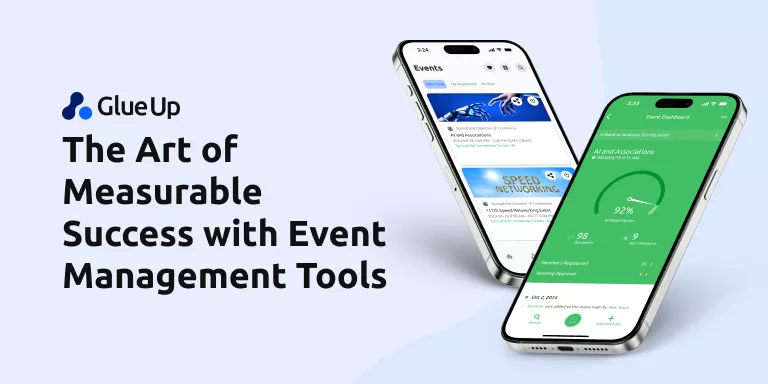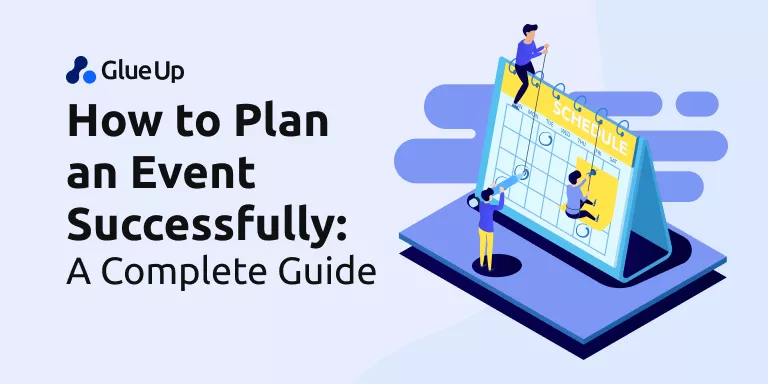
Pitching at events, no matter what you're pitching, is one of the most nerve-wracking things to undertake, even for an experienced salesperson. There's more to your elevator pitch than just hitting some buzzwords on the head, and it all starts with preparing yourself and understanding your audience.
Once you have these major gaps filled in, the rest of your pitch becomes a lot more systematic, and we'll show you how to do just that. Tried and true methods have been proven and dismantled over the years of trial and error from the millions of salesmen before you, so you have a lot of
Here are the Do's, and the Dont's of pitching yourself, your product or anything else really, at events.
Skip to a Do & Don't
- Prepare
- Understand your audience
- Practice makes perfect
- Make a connection
- Be Business Savvy
- The Elevator Pitch
- Use Visuals
- Be an Expert Negotiator
- Have Thick Skin
- Learn to Fail
1. Prepare

As you might be aware, this is one of the most important things to any pitch. But it's more than just having a pitch ready to go. It's knowing all of the tips below plus knowing other tactics to make the most convincing pitch possible. Cater the pitch to what you're selling.
The Do's
Know what appearance you want to give off. This requires you to know your audience and the atmosphere of the event or place you are presenting at. You may want to prove you know the business world, then you should wear a suit. Using humor depends on the tone of the event.
The Don'ts
Don't just wing it. This may get you passed inexperience clients and customers but when it comes to professional investors, they can tell when someone doesn't know their stuff. Being able to answer any and all questions about your business will get you far. Surprisingly, many people don't know their own company. If you don't care about your own company, why should investors care?
2. Understand Your Audience
 3. Practice makes Perfect
3. Practice makes Perfect

A cliche phrase, yet an often overlooked one. You may believe that you know everything about your company, but unless you practice, practice, practice, you may hit a roadblock when it matters most.
The Do's
Perfect practice makes perfect. Have the practice pitch feel as close to the real thing as possible, especially if you get nervous.
Try to use the location you will be pitching in. If you will be at a table be ready to sit or stand, but choose to stand if its an option and feels comfortable. If it will be at a networking or networking-style event, practice speaking directly to someone and avoid it sounding like a speech and more like a conversation. Remember that they will notice your body language and eye contact much easier when it's close up.
If you are on a stage, know how much space you have to walk around and practice making use of it while talking. Be ready to use a mic, headset, or your powerful voice. Holding a mic is harder than you think, so get a similar size object and spend time making sure you keep your mouth the right distance from the mic without taking your eyes off the audience. You may look crazy talking into a water bottle, but getting that $100,000 ask makes it well worth it.
Use a practice audience that is overly critical of you. This allows you to know any possible complaint or question that your actual audience may think. Some questions you may be able to answer on the spot, but be ready to answer a question you have not thought of and may not know anything about. A practice audience may bring these up, allowing you to prepare for the potentially devastating question.
Every pitch you make is practice for the next one, so you should always be improving. Some say that you should start a pitch from scratch every 5 pitches or so. This will give it a fresh feel and ensure you don't sound like a robot asking for money. Not necessary, but a good idea for people who have to make pitch after pitch.
The Don'ts
Do not use a script to practice, nor memorize your speech. A memorized speech is very noticeable and will not establish a necessary connection with your audience. This is why practicing in front of a critical audience is crucial. They may stop you mid-pitch to ask questions. They could tell you to focus on one area of the pitch rather than give the entire thing. They may not even want to hear the whole pitch. Being able to feel the audience while pitching takes a lot of practice, but mastering it will bring in great rewards.
Don't only practice the formal pitch. Use some self-awareness to know when to change minor details on the fly, because the events and your audience will never 100% be what you expect. There's no trick to this, just practice until it becomes second nature to you.
4. Make an Emotional Connection

Tell a story that creates an emotional response to your pitch. Giving anecdotal evidence about why they should value will increase your chances that they will value it.
The Do's
This really hits home for me.
As a college student studying entrepreneurship and trying to start my own business. I have to take pieces of advice every day. Recently, I made my first every pitch for a company I was trying to start all on my own. Using a personal anecdote about how music changed my life, proved to the potential donors that I cared a great deal about my company and would do nothing to let it fail. This is how I ultimately sold my idea to them and got my first $100. Doing something like this will almost guarantee a heightened interest in your idea.
The Don'ts
Refrain from talking about yourself. Though the story may be an experience close to you, talking about yourself too much will make you seem arrogant and take away from why you're there: to sell your idea.
Don't just tell a story. It will waste everybody's time if you decide to talk about breaking your arm when the app is focused on the music industry. Only talk about what directly affects your idea.
Don't fabricate a sob story. This will bite you in the butt later, especially if you forget the story you told or one of the audience members ends up working close to you. Lying anywhere in a pitch is not only unethical but potentially devastating to your entire company.
5. Be Business Savvy

While you shouldn't talk about yourself, you must give the impression you are an expert on the subject you are pitching. To do this you must know every part of what your pitching, know exactly what you want, and know the numbers.
The Do's
Your goal is to make the audience want to work with you. If you are great at your job, it means less work for them. Show a strong work ethic and dedication.
The Don'ts
Don't act like you know more than your audience. While you should know your company better than anyone else, you shouldn't be telling people they are wrong. If they make an incorrect assumption or misinterpret a statement, kindly reword what you said or give another piece of information that clears things up.
Don't make up numbers. If you don't know something uses the phrases: "That’s a great question, give me a day or so to do some research and I’ll report back." or "I haven’t approached my research from that perspective, I’ll be sure to it — great suggestion."
6. The Elevator Pitch

Even though you are giving a full pitch does not mean you're off the hook for an elevator pitch. Thought the source is debated there is a common phrase, "If you can't fit your idea on the back of a business card, you don't have a clear idea."
The Do's
Lead strong, first impressions are everything. Giving a 10 second, 2 sentence overview of the company that hooks the audience makes the rest of the pitch worth listening to.
Follow the logline up with a longer 30-45 second elevator pitch that is also an overview of the company but gives key and compelling facts that leave the audience wanting more.
Immediately after, show the value of the company.
The Don'ts
Don't only use this when you have the chance to pitch. Any time you meet someone with potential value to your company, lean in and give them the elevator pitch.
Don't rush through this. This is the most important part of your pitch because you will lose all engagement if it doesn't make sense.
Don't use a rhetorical question, such as: Has ___ every happened to you? Very rarely do questions, not sound cliche. The pitch is all about what the idea can do and what you know about it.
7. Highlight the Value Proposition
A pitch is selling something to someone and the value is not always in dollar signs. A lot of value can be passed along to the person in front of you at an event if you just know exactly how to highlight what that value is.
In the business world, everyone expects that good values translate to dollar signs, and something like user growth, organic web traffic, returning users, time on page are great for software platforms and websites. Clicks and impressions are great for advertisers and so on. Other values come from tech, and what's your advantage.
Basically, what do you do that makes you stand out?
Did you come up with an answer?
That's your value proposition. Now here's how you highlight it!
The Do's
Research your competitors. Find out what makes them tick and what keeps bringing users and customers back to them. Compare it to yourself and see where you can outshine them. If you know your audience uses them at an event, then you should be ATTACKING that pain point, or their faults, or pricing, or whatever it is that makes you stand out from the crowd.
The Don'ts
Don't bad-mouth your competitors.
It's tempting to talk down about your competitors and make them seem like trash compared to you. Heck, you could even beat them in all aspects of your business and you could be very correct in your statement when attacking them.
But, when we said you should attack a pain point, that doesn't really give you an opportunity to bad mouth your competitors. Attack your audience's paint point. That's the real enemy. Taking customers from your competitor is the real insult to injury.
However, bad-mouthing competitors do no one any good. It doesn't shine any light on your product, and in the end, it just makes you look desperate and weak. You would never go to a job interview and bad-mouth the other candidates, because what then would the employer think of you? See what we mean?
8. Use Visuals

There are few things more boring than sitting through a presentation that you have no interest in. Make the audience interested. Using visuals is an easy way to draw the attention of the crowd. The images or objects should carry meaning and provide value to your audience.
The Do's
Potential Interactive ideas:
- Have them use their 5 senses, let them touch, look, listen, smell, or taste (if its meant to be eaten)
- Have one of the audience members try it and have them describe the experience
- If it can't be tested in the location of the pitch, show a video of it being used
- If the product is not interactive (a process, a service, etc.) let them experience it in a different way (a band for a music service, food for a restaurant proposal, etc.)
- Use Data. Show growth. Show users on your platform if that's your offer. This really sells the success you have. Screenshots even!
The Don'ts
Do not use poor quality images. No stock photos, cell phone photos, selfies, etc. This devalues what you are selling and shows you put little effort into this pitch.
Do not have meaningless images. Make sure all visuals carry some meaning. Show examples of your ideas at work. Show happy customers. Show how successful your pitch can be.
Refrain from using PowerPoints. If you can pitch without a PowerPoint, do it and make them focus on you and your pitch. If you must, use PowerPoint makes it easy to read, have just a few words per slide and be able to summarize each slide in 1-2 sentences.
9. Be An Expert Negotiator (or a least pretend you are)

Have a strategy and a plan going into the pitch. This takes, you guessed it, planning. While researching your audience, understand their negotiation strategy. Some may be impatient and not invest in people who are indecisive. Some may be willing to negotiate a lot, and some may be stubborn and not change their offer.
The Do's
Have an accurate value of the company. Have an ask that shows you value the company, but not too high that shows you are too optimistic, or just bad with numbers. Be able to stay as close to your ask as possible without coming off as egotistical or arrogant.
Have a minimum that you will accept. If the potential customers, investors, or clients are unwilling to change their offer, have a minimum value of the company and be able to say no if they will not go above it.
The Don'ts
Don't be stubborn with your number. You might have to meet in the middle between your ask and their offer, a win-win strategy. You may even have to drop all the way down to their offer if they are being stubborn. They have the power in this situation if you really want or need the offer.
10. Have Thick Skin

Some audience members might be hard-asses. They will put you in the hot seat and you might feel attacked. Whatever happens, think of it as constructive criticism and stick to your goal. Show them you are not a pushover and know what you want. They are being skeptical and critical because they know losing money is much worse than someone's feelings.
The Do's
Anticipate objections.
Practicing and doing pitch after pitch will get you used to the comments that once would have broken you down, discouraged you, or ruined your pitch. If you don't have thick skin now, you for sure will several pitches later.
The Don'ts
Don't be overly defensive of what your pitching. You may be wrong about something. Rather than saying “no” or “wrong,” be able to accept the criticisms and change your pitch and product for the better.
Don't be stubborn when it comes to changing your pitch. If the same question or concern keeps coming up about your company, include the answer in the presentation. If it takes more research, then take the time to do it. It's better to spend time sooner rather than later to avoid wrecked first impressions.
11. Learn to Fail

On top of having thick skin, the best part of an event for improving at pitches, and anything for that matter, is being able to fail. That does not mean you should strive for failure or be okay with failing. This means when you do fail — since failing is inevitable — you grow from that, and you turn the failure into a positive.
The Do's
Write down all objections, questions, or comments because your audience will think alike. Including the answers in the presentation and clarifying the pitch will prevent getting the same questions over again. Every time you do this the question will keep narrowing in on how to increase the value of the idea.
Every experience can be a learning experience if you have the right mindset.
The Don'ts
Rome wasn't built in a day. Pitching is an art that takes time to practice, fail, and perfect before finally succeeding Brian Chesky, co-founder, and CEO of Airbnb was rejected by 7 investors in Silicon Valley, 2 of which didn't even respond. Tim Westergren founded Pandora in 1999, right before the dotcom bubble burst, and was running out of money. It wasn't until Westergren's 348th pitch when Pandora received the essential funding for the now publicly traded company. In 1999, when Google founders Larry Page and Sergey Brin offered their website at $1 million, Excite CEO George Bell famously rejected it, and again rejected it at the $750,000 price. Google seems to be doing pretty well now.
If at first, you don't succeed, try, try again. The only way to know the perfect way to pitch at events is to go out and pitch for yourself.
So what's the don't here?
Don't give up.
All in all pitching at events will enhance your product, services, and yourself if you do it right. It all comes down to being prepared and learning from your mistakes. Whether your pitching an event or create an event for pitches, let Glue Up take care of everything from event page hosting, to ticketing & email campaigns.
Hosting an event full of pitching? Book a demo and see how event management software can help smooth over your roster of speakers. Back to Top



